| Results of research on fossil mako sharks. part 2 |
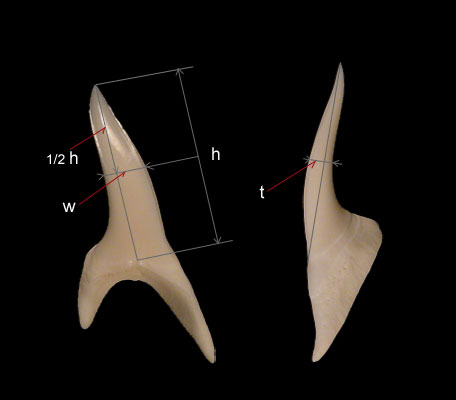 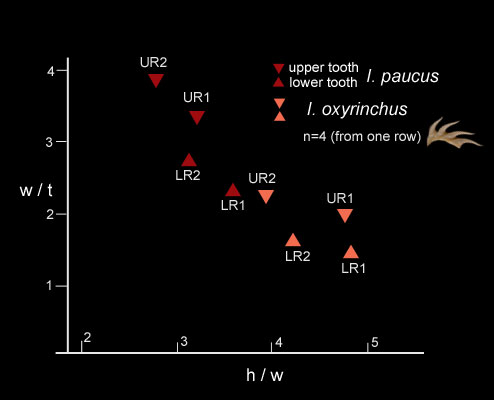 |
| Fig. 1. Measurement of the tooth crown and distribution pattern of the tooth@proportion. |
| 1. Pliocene, Naarai F. |

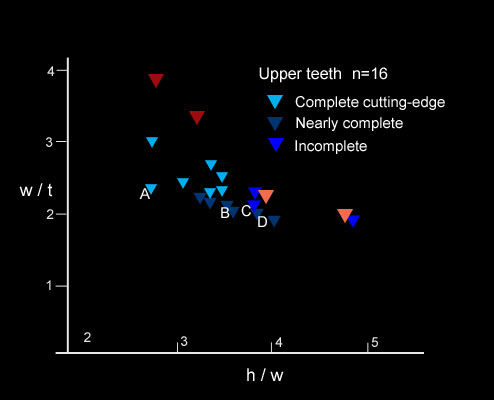
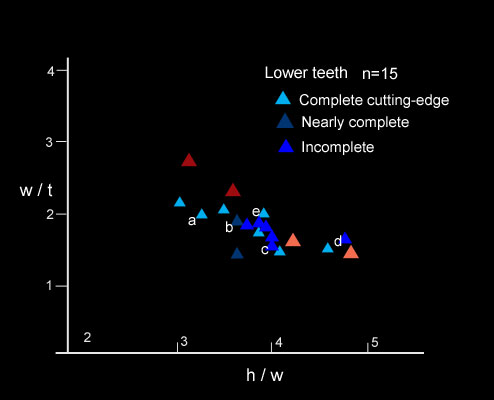
| Fig. 2. Distribution patterns of specimens from the Pliocene of Naarai F., Left: upper tooth, Right: lower tooth. |
| Specimens, both upper and lower teeth, from the Pliocene of Naarai F. showed a wide variety of mixed type shapes of Isurus oxyrinchus (the shortfin mako shark) and I. paucus (the longfin mako shark). Fossil teeth of I. paucus type are thicker than those of the modern shark and especially the upper teeth are thicker by 40% on average. Some teeth resemble I. retroflexus in shape. Among the mixed type narrower teeth with incomplete cutting-edge, evolved to bear an elegant shape like as a Janbia dagger, is thought to be the modern shortfin mako shark. |
| From the late Miocene to the Pliocene, Mako sharks consisted of a wide variety of variants with various tooth shapes and cutting-edges, and had been swimming in the sea. To give the different sharks a different species name (I. oxyrinchus, I. paucus, I.desori, I. retroflexus) is like dividing a rainbow into 3 or 7 different colors. |
| A distribution pattern of fossil Mako sharks and an adaptive radiation of Mako shark |
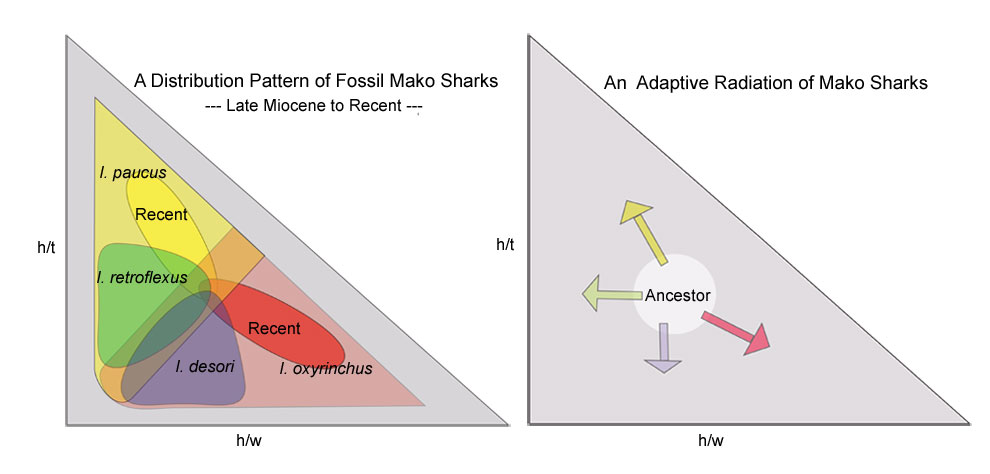
| Fig. 3. Left: Distribution pattern of four fossil species of the Mako shark. They are not separated from each other. Right: An adaptive radiation of the Mako shark. |
| Ancestral species |
| Anterior teeth of an ancestor mako shark locate near the center of the distribution pattern (h/w ratio = 3.5, h/t ratio = 2). The first row tooth and the second row tooth of the ancestor mako shark resemble the second row tooth of the longfin makoshark and the first row tooth of the shortfin mako shark, respectively but both teeth are thicker with mesio-distally less curved tooth than those of the modern sharks . Cutting-edge of the ancestor shark could be complete or nearly complete. The Eocene species I. precursor probably is close in shape to the ancestor. |
| 2. Early Miocene, Ichisi G. |

| Isurus cf. oxyrhinchus; A: imcomplete cutting-edge, height; 39 mm, B: nearly complete cutting-edge, height; 30 mm |
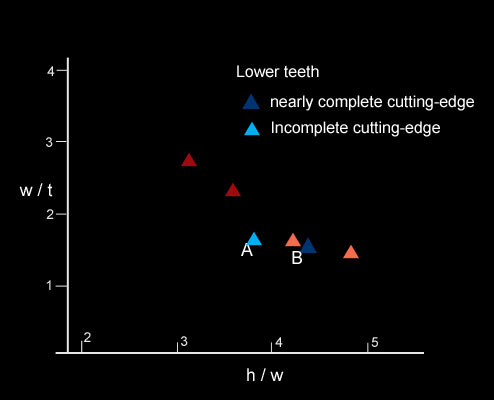
| Fig. 4. Distribution pattern of the lower teeth from the Early Miocene of Ichishi G. |
| 3. Late Oligocene, Ashiya G. |

| Isurus sp.; height; 19 mm, complete cutting-edge. |
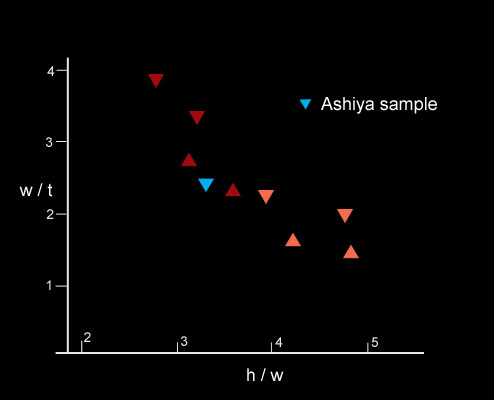
| Fig. 5. Distribution pattern of an upper tooth from the Oligocene of Ashiya G. |
20090911@Fumio Nakagawa@